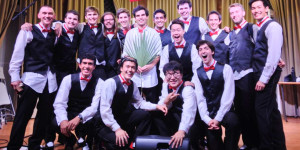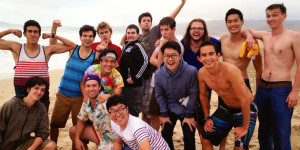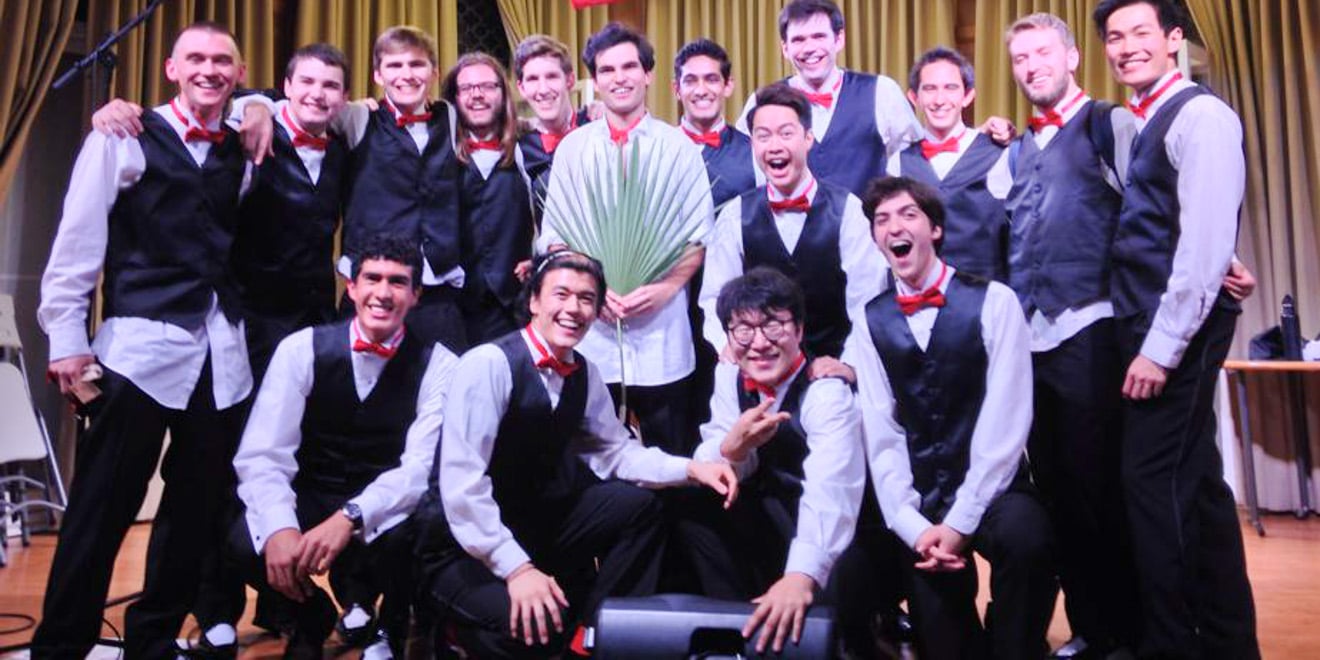
It’s 4:00 p.m. on a Friday outside the bookstore. There are a few tourists milling about, as well as some unsuspecting undergraduates enjoying the afternoon sun. We run out, screaming, jumping and partaking in general tomfoolery. Slowly, we assemble ourselves into the shape of a horseshoe and prepare to sing. Welcome to “ClawCapella,” a weekly a capella performance hosted by The Stanford Fleet Street Singers. Here, fifteen of my closest friends and I have the privilege to sing for anyone willing to listen. More importantly, we have the opportunity to invite other on-campus a capella groups to perform with us in the hope of cultivating an a capella community.
But the questions is raised — why bother? What’s the value in community?
Investment in the arts is on the decline. We exist in a society that prioritizes technologic and scientific advancement over artistic endeavors. A recent study conducted by the National Endowment for the Arts shows that only 33.4 percent of U.S. adults have attended at least one benchmark art event (e.g,. opera, orchestra, art gallery, play, etc.) in the past year. Earlier this decade that percentage was 39.4 percent.
Considering that we go to school in a mecca for technological innovation, there is an increasing tendency to put arts on the back burner. The assumption in Silicon Valley tends to be that arts are nonessential relative to technological development.
As artists at Stanford, we have a responsibility to advertise and promote one another’s endeavors. In the aforementioned study, the NEA also found that those exposed to arts in their formative years are three times more likely to engage with the arts in their adult lives. Publicizing one another’s art is not only beneficial to our current undertakings, but also to the future of arts participation in America. The more people we attract to the arts now, the more who will participate in them later.
It is important to note that promoting the arts can and should be a multidisciplinary venture. There is no reason why performative and visual artists cannot unite to publicize one another’s works. After all, both communities are after the same thing — the popularization of the arts. It can be as simple as hanging up posters or forwarding an email blast; if every artist on-campus did something like that, we would assuredly see higher turnouts at art events.
But there is a difference between community and networking. What I just described is networking — like-minded agents connecting with one another for the purpose of expanding their outreach – while Community is contingent upon fun to survive.

Singing with Fleet Street has made me realize how important fun is in creating the group’s dynamic. Fellow Fleet Street member Matt Herrero ‘17 likes to refer to this as the group’s “playful” quality. Without the pervasive giddiness that characterizes Fleet Street, we would simply be a bunch of dudes singing. When you incorporate gaiety into the equation, however, Fleet Street becomes a unit (one might even say a community) dedicated to a singular goal — showing our audience a good time.
When we invite other a capella groups to sing with us, the “gaiety effect” is magnified. We derive pleasure from watching the myriad a capella groups on campus develop their own, distinct musical identity. More than that, though, we delight in talking with the groups’ members after their performances because it’s an opportunity to forge stronger bonds with those who share our passion for a capella singing. More often than not, we end up regaling each other with the ridiculous experiences we’ve had while performing. It’s kind of magical that such frivolous conversations can take place within a framework that is firmly rooted in a commitment to making good music.
While not all works of art aim to be as lighthearted as those of Fleet Street (take, for instance, the weighty message of TAPS’ “A Kingdom”), artists can stand to incorporate levity into their diet of artistic experience. Levity generates creativity, as it affords us a means of coping with a society that has subordinated art to “serious” endeavors. It also prevents zealous artists — amongst whom I am included — from taking themselves too seriously.
At some point, you just gotta stop and smell the roses.
Ultimately, the sheer enjoyment that artists get from being around one another is what makes community possible. Having that community is quintessential to broadening the scope of Stanford artists’ potential audience. More significantly, encouraging lightheartedness and a “playful” mentality ensures that such a community will genuinely care about the artworks being produced and the artists who produce them.
Contact Ian Anstee at [email protected].
